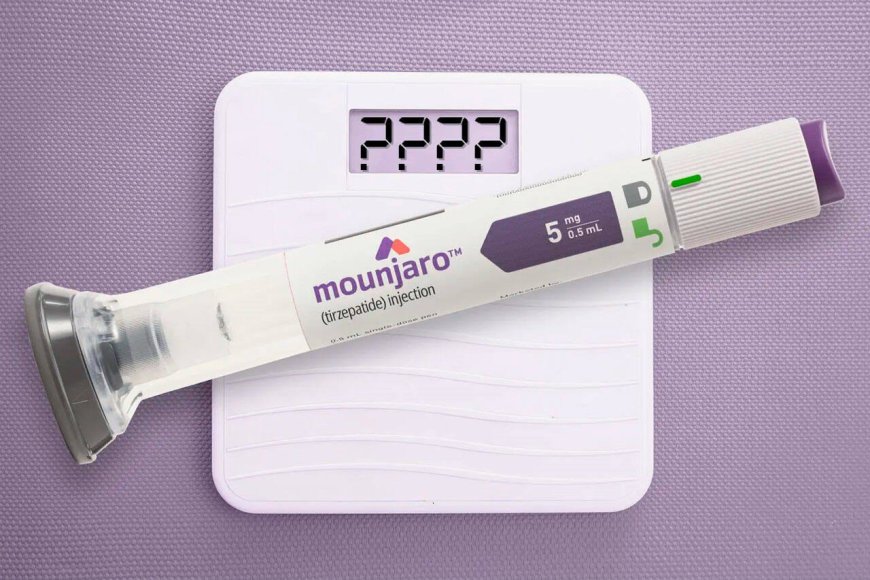Understanding the Risks and Side Effects of Mounjaro

Mounjaro Injection Dubai, also known by its generic name tirzepatide, is a novel medication that has gained attention for its effectiveness in managing type 2 diabetes and aiding in weight loss. Approved by the U.S. Food and Drug Administration (FDA) in May 2022, Mounjaro works by mimicking two hormones—glucagon-like peptide-1 (GLP-1) and glucose-dependent insulinotropic polypeptide (GIP)—that regulate blood sugar levels and appetite. While the benefits of Mounjaro can be significant, understanding the potential risks and side effects is crucial for anyone considering this treatment.
Common Side Effects
Like any medication, Mounjaro can cause side effects. Common side effects reported in clinical trials include:
-
Nausea: Nausea is one of the most frequently reported side effects, especially during the initial weeks of treatment. Many patients experience mild to moderate nausea, which may subside as their bodies adjust to the medication.
-
Vomiting: Some individuals may experience vomiting, which can be distressing. This is often linked to the dose of the medication, with higher doses correlating with a higher incidence of vomiting.
-
Diarrhea: Gastrointestinal symptoms such as diarrhea can occur, leading to discomfort and, in some cases, dehydration if not managed properly.
-
Constipation: While diarrhea is common, constipation is another gastrointestinal side effect some patients may experience.
-
Abdominal Pain: Cramping or discomfort in the abdomen may occur, typically associated with gastrointestinal issues.
-
Decreased Appetite: Mounjaro may lead to a reduced appetite, which is often beneficial for weight loss but can also affect nutrition if not monitored.
-
Headache: Some users report headaches, which can vary in intensity.
-
Fatigue: A feeling of tiredness or fatigue may develop, particularly during the adjustment period.
While these side effects are typically mild to moderate and may diminish over time, they can significantly affect a person’s quality of life. It is essential to discuss these potential side effects with a healthcare provider before starting Mounjaro.
Serious Side Effects
Although most side effects of Mounjaro are mild, there are serious risks associated with its use that must be taken seriously:
-
Pancreatitis: There have been reports of acute pancreatitis (inflammation of the pancreas) in patients taking Mounjaro. Symptoms include severe abdominal pain, nausea, and vomiting. If any of these symptoms occur, patients should seek medical attention immediately.
-
Thyroid Tumors: In animal studies, tirzepatide was associated with an increased risk of thyroid C-cell tumors. While the relevance of these findings to humans is unclear, patients with a personal or family history of medullary thyroid carcinoma or multiple endocrine neoplasia syndrome type 2 are generally advised against using Mounjaro.
-
Kidney Problems: Some patients may experience kidney issues, particularly if they experience dehydration from gastrointestinal side effects like vomiting or diarrhea. Monitoring kidney function during treatment is essential.
-
Allergic Reactions: Although rare, severe allergic reactions to Mounjaro can occur, leading to symptoms such as rash, itching, swelling, and difficulty breathing. Patients should seek immediate medical help if they experience any signs of an allergic reaction.
-
Hypoglycemia: While Mounjaro is not typically associated with severe low blood sugar (hypoglycemia), patients using it in combination with other diabetes medications, such as insulin or sulfonylureas, should monitor their blood sugar levels closely to avoid hypoglycemic episodes.
Who Should Avoid Mounjaro?
Certain individuals should exercise caution or avoid Mounjaro altogether:
-
History of Thyroid Cancer: Those with a personal or family history of medullary thyroid carcinoma or multiple endocrine neoplasia syndrome type 2 should avoid this medication due to potential risks of thyroid tumors.
-
Severe Gastrointestinal Disease: Patients with a history of severe gastrointestinal disease, including gastroparesis, should consult their healthcare provider before starting Mounjaro.
-
Pregnant or Breastfeeding Women: The safety of Mounjaro during pregnancy and breastfeeding has not been established. Women who are pregnant or planning to become pregnant should discuss the risks and benefits with their healthcare provider.
-
Kidney or Liver Issues: Individuals with severe kidney or liver problems should also exercise caution when considering Mounjaro, as it may exacerbate existing conditions.
Monitoring and Management
For those who choose to use Mounjaro, regular monitoring and communication with healthcare providers are essential.
-
Routine Check-Ups: Regular medical check-ups can help monitor blood sugar levels, kidney function, and any side effects.
-
Dietary Adjustments: Maintaining a balanced diet is crucial, especially when experiencing side effects like nausea or decreased appetite.
-
Hydration: Staying hydrated is particularly important for managing gastrointestinal side effects and preventing kidney issues.
-
Reporting Side Effects: Patients should inform their healthcare provider of any concerning side effects, especially if they experience symptoms of pancreatitis or allergic reactions.
-
Adjusting Dosage: If side effects are severe, healthcare providers may recommend adjusting the dosage or switching to an alternative treatment.
Conclusion
Mounjaro offers a promising option for managing type 2 diabetes and weight loss, but it is essential to understand the potential risks and side effects associated with its use. By staying informed and maintaining open communication with healthcare providers, individuals can effectively manage these risks and make informed decisions about their treatment options. As with any medication, the benefits must be weighed against the potential for adverse effects, ensuring that the chosen treatment aligns with the individual’s health goals and overall well-being.
